News & Articles
Browse all content by date.
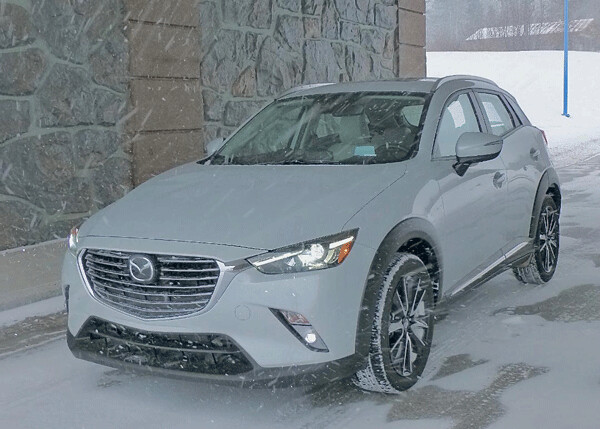
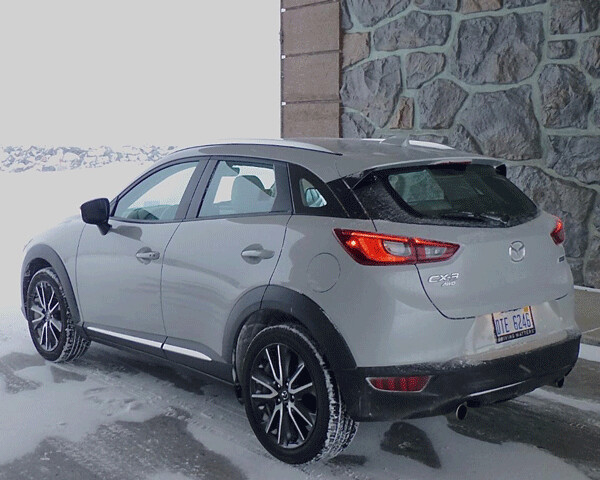
Last summer, I had the occasion to test a 2017 Mazda CX-3 for a week, and while I was impressed overall, even though there were a couple of things that concerned me. What didn’t concern me was the flashy design and appearance of the CX-3, which has an interesting assortment of creases and contours, all of which harmonize into a thing of beauty that other SUVs, and even Mazda’s larger ones, can’t match.
I continue to stress that my belief is consumers should select the “smallest utility vehicle that is large enough,” because enormous, truck-based SUVs that nearly went the way of the dinosaur when the gasoline prices spiked, spend most of their days hauling around a lot of extra size and weight and guzzling fuel during the 90-percent of their driving devoid of the van-full of people and/or camping gear.
From that standpoint, I suggest continuing to road-test SUVs smaller that what you may desire, until you find one that meets your demands and still is more compact and agile to drive and can easily get twice the fuel economy of the big ones. The competition in that CUV (compact utility vehicle) is ferocious, and continues to get broader and more competitive by the month.
Look at Honda, with its Pilot, then its smaller CR-V, and now an even more compact HR-V. Toyota has the Highlander, then the 4Runner, and then the compact RAV4, and now has spread out into various smaller runabouts that may or may not even offer all-wheel drive — which is the primary reason folks wanted SUVs/CUVs in the first place. And Nissan has the Pathfinder, the Murano, down to the Rogue, and now the Rogue Sport, and a new one, the Kicks (as in, “Get your Kicks”) that is smaller still.
Mazda created the compact CX-5, which seemed perfectly aimed at the CR-V and RAV4 and Rogue, and they came out with the larger CX-9, and the smaller CX-3. All three perform with the best, and have the added and undeniable edge in sporty “fun-to-drive” that lives up to Mazda’s “Zoom-zoom” philosophy.
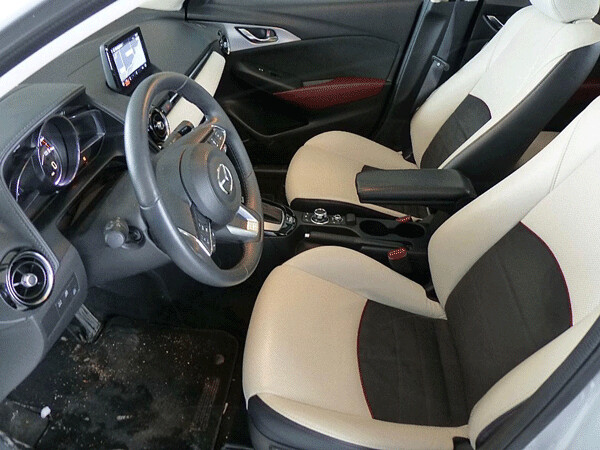
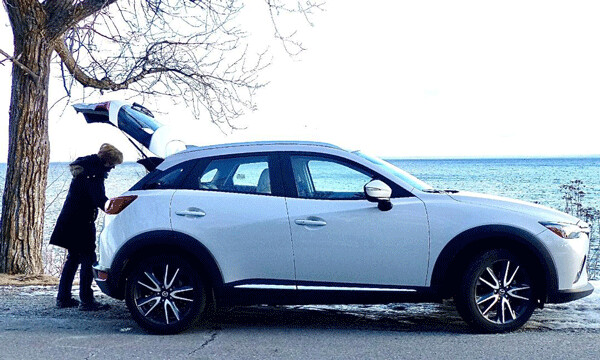
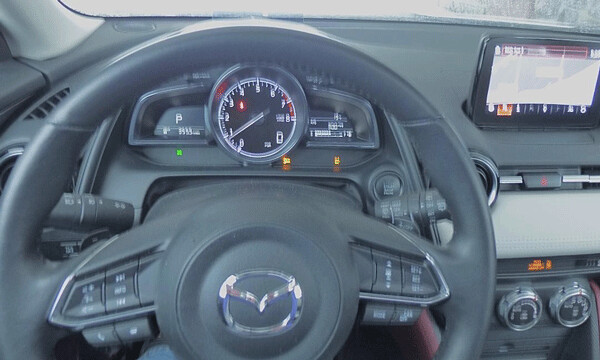
Last summer, while I had to admit the CX-3 was cramped in the rear seat and stowage room, it was amazingly fun to drive and agile, and I truly prefered the smaller 2.0-liter 4-cylinder engine to the larger and more powerful 2.5. The statistics showed the EPA esdtimates were only about 1 mpg different, but in my driving -- smooth, steady, but with gusts of gustro — I was able to coax that CX-3 with the 2.0 up to 38.4 miles per gallon. And taht’s with AWD.
At a price of about $25,000, the CX-3 seemed to have all the assets that a couple with little kids, or an aging couple whose kids are gone, might want. My only reservation was the rear seat. And then my older son, Jack, who is about 5-11, and helps me a lot in creating this column and chipping in with my wife, Joan, to expand my experiences with test-drivers, arrived for a visit. He volunteered to hop into the rear seat, even though we warned him that it wouldn’t be comfortable.
He folded himself just slilghtly to fit into the rear door, and once inside, exclaimed that it was fine — not expansive, but spacious enough and designed to comfortably house a couple of adults. So as I gave the CX-3 back, I had to put a question mark next to the one concern I had.
Six months later, in the harshest time of winter in Duluth, Minnesota, I got a new 2018 Mazda CX-3. It, too, was gleaming pearlescent white, and it looked striking, even against the snow, which kept falling in differing dosages throughout the week. It looks pretty much the same as the 2017, and the magazines all kissed off the new one as being virtually the same. It’s not.
A couple of the features are important to Northern drivers, such as a heated steering wheel, automatic dimming and brightening headlights, and a little trick called “G-vectoring.” This is something a few automakers are getting into, but Mazda is, as usual, ahead of the technology race. When you have g-vectoring, it means your car will turn in and corner and slalom tightly in much quicker-reacting form. In Mazda’s scheme, it is a safety characteristic that redefines Zoom-zoom beyond reason.
As a driver, when you decide to make a quick turn or lane change, you know what’s coming, and you may or may not be impressed at how th vehicle responds. Your wife/passenger is more surprised, and goes through enough of what they call “head-toss” to be uncomfortable, tending toward car-sickness.
Mazda noted that what makes the car respond more quickly and more smoothly is to reduce the power to the outside front wheel just slightly, as it simultaneously softens the same wheel. That seems to conflict with the idea of stiffening the outer wheel, but the softening inspires your instincts to turn fully, and as you start to turn, the power and suspension reduction on the front outside wheel makes you realize your timing for the turn works. Besides, it only affects your steering instincts for a millisecond.
The real-world evidence that it works is that in a normal car, you swerve or turn or change lanes abruptly, and you find the urgent need to correct your steering input, which sometimes leads to over-correcting and the need to correct the correction. That, I’ve always maintained, is what throws you out of control. With Mazda’s brilliant technique, you may not feel any difference, and shrug it off as insignificant. But Mazda’s research shows that the driver rarely or never needs to correct, or over-correct, because the car goes where it’s steering more smoothly.
Your front-seat passenger will not notice the difference, either, but will get home without the queasiness or stiff neck.
Mazda put G-vectoring into the 2017 Mazda3, and Mazda6 sedans, and into the new CX-5, but the newest model of the CX-3 was already out, and missed the technology. That didn’t mean it was a bad car, but if you’re going to get a vehicle, you want it armed with the best technical tricks -- particiularly in Minnesota, where we have hundreds of car-seeking deer who want to dash out and bang into any size or shape vehicle that might pass between them and their dusk watering path. Swerving smoothly doesn’t sound as catchy as Zoom-soom, but it is part of the idea.
What impressed us both was that even when the snow piled to inches that became a foot or so, the small, compact CX-3 stormed through it, you should pardon the expression. The Touring and Grand Touring varieties of the CX-3 have 18-inch wheels, and all-season tires, which could, of course, be upgraded to a more winter-beating variety. My favoirites remain Nokian WR-3 or WR-2 all-seasons.
But I also have to take issue with Mazda designers and engineers, who move to the larger wheels and tires for improved sporty handling, but without regard for another theory of mine. If you take a 16 or 17 inch wheel, mounted with a tire, then you increase the size of the wheel to 18 or even 20 inches, you must reduce the width of the tire sidewall to make it the same fit. In so doing, every time you hit a washout or nasty rough patch of pavement, the less cushioning provided by wider tire sidewalls is transmitted directly to you in the passenger compartment with jolting harshness.
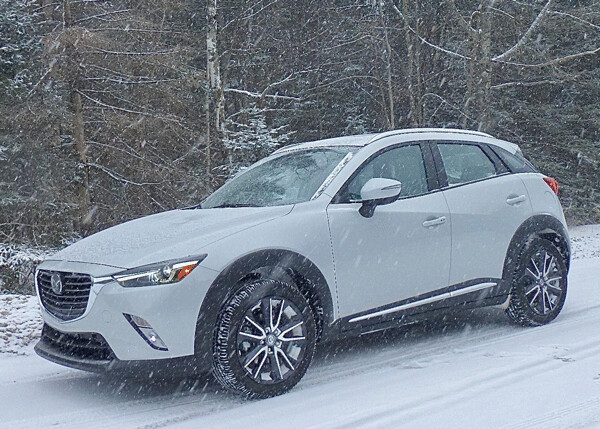
We didn’t find our CX-3 too harsh, although it has a neat little toggle switch on the console that you can click into “sport” setting. It firms the suspension, quickens the steering and allows the exceptional 6-speed automatic to hold its shiftpoints longer. We found the CX-3 actually felt better in sport mode.
I was briefly disappointed when my readings disclosed a best gas-mileage figure of 30.2 mpg, until I realized that we spent much of our time with the CX-3 when temperatures were either single-digits or below zero, and every car or truck I’ve ever tested can’t match its best mileage of summer during severe cold. You want to warm up the car briefly, and severe cold simply requires the computer to let in more fuel to the air-fuel mixture.
Another word of praise is due for the 6-speed automatic transmission, built in-house by Mazda. You can still get a 6-speed Mazda manual shift for the CX-3, which is outstanding, but almost all competitors have given in the the CVT trend, and the annoying hummmmm of the continuously variable transmission reduces driving satisfaction, in my opinion. If you don’t believe me, test-drive any competitor with a CVT, then drive the CX-3 with its smooth-shifting and quick 6-speed automatic, and with the available paddles on the steering wheel, you will be zoom-zoomed to appreciate the difference.
Now we’re torn. We’d like to purchase a small, fuel-efficient SUV, and we have several in mind. We know the CX-3 can’t be set up to tow, and it has limited storage space behind the rear seat, and we have that cramped getting into and out of the rear seat. But with all things considered, the CX-3 has mo back up to the top of the class.
| Tweet |


